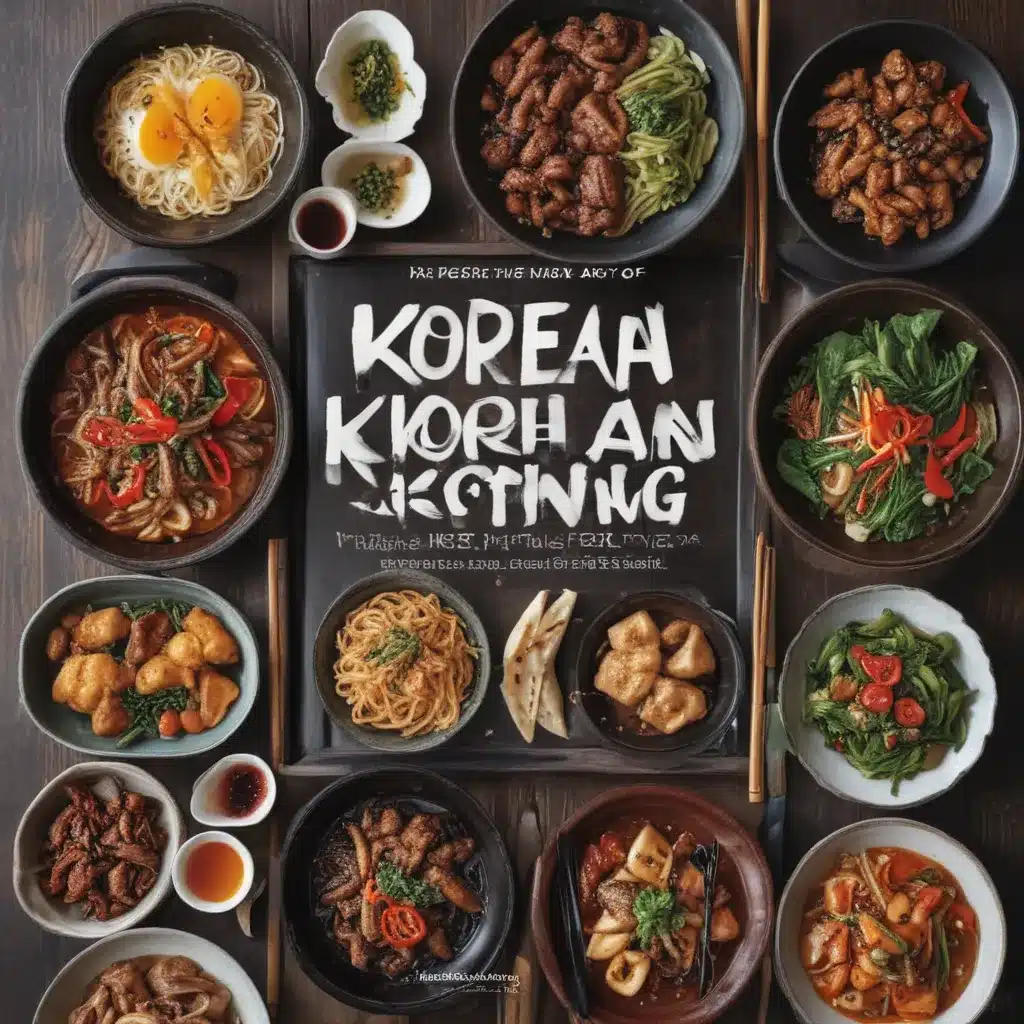
Unlocking the Secrets of Korean Cuisine
I still remember the first time I tried authentic Korean food. It was during my college years, when a new Korean restaurant had just opened up near campus. Reluctantly agreeing to try it with a group of friends, I walked in with a rather skeptical mindset, expecting the usual bland and heavy dishes that passed for “ethnic” food back then.
Boy, was I in for a rude awakening. From the moment the tantalizing aromas hit my nose, I knew this was going to be something special. The vibrant colors, the complex flavors, the textures that danced on my tongue – it was a revelation. That first bite of bulgogi, that crisp and pungent kimchi, that hearty and comforting bibimbap – it was as if the culinary gods had opened a door to a whole new world.
Korean Garden, the restaurant that introduced me to this incredible cuisine, has long since closed its doors. But the memories of that transformative meal have stuck with me, fueling a lifelong passion for mastering the art of Korean home cooking. And let me tell you, it’s been one delicious journey.
Embracing the Complexity of Korean Flavors
Korean cuisine is a fascinating tapestry, woven together with a rich history, diverse regional influences, and a deep reverence for balance and harmony. At its core, it’s all about finding the perfect equilibrium between sweet, sour, salty, and umami – a delicate dance that can take years to truly understand and execute.
Take kimchi, for example, the beloved fermented cabbage that graces the table of every Korean household. The process of making this seemingly simple dish is anything but straightforward. It involves meticulously selecting the right ingredients, carefully layering the flavors, and then patiently waiting as the magic of fermentation works its transformative powers. And that’s just one small piece of the puzzle.
Korean cooking also places a heavy emphasis on the quality and freshness of ingredients. From the perfectly-marinated meats to the vibrant array of banchan (side dishes), every component is treated with the utmost care and attention. It’s a culinary approach that demands a level of precision and dedication that can be daunting for the uninitiated.
Mastering the Techniques and Traditions
But don’t let that intimidate you. With the right guidance and a little bit of practice, the art of Korean home cooking is something that can be embraced by anyone, regardless of their culinary experience. It’s all about understanding the fundamental techniques and respecting the rich traditions that underpin this remarkable cuisine.
One of the key elements to master is the art of seasoning and balancing flavors. Korean dishes often rely on a harmonious blend of soy sauce, sesame oil, rice vinegar, and gochujang (a fermented chili paste) to create that signature umami punch. Learning how to wield these ingredients with a delicate touch is crucial for achieving authentic results.
Equally important is the mastery of cooking methods like braising, grilling, and fermentation. These techniques not only unlock the full potential of the ingredients, but also imbue the dishes with a depth of flavor that is truly unparalleled. And let’s not forget the intricate knife skills required to prepare the vibrant array of banchan – from paper-thin slices of pickled radish to the delicate shreds of seasoned spinach.
Unlocking the Secrets of Korean Cuisine
But the true beauty of Korean home cooking lies not only in the flavors and techniques, but also in the rich cultural traditions that are woven into every dish. It’s about honoring the past, celebrating the present, and creating a sense of community around the table.
Take the ritual of sharing a meal, for example. In Korean culture, it’s not just about nourishing the body, but also nourishing the soul. The act of gathering around the table, passing the communal dishes, and engaging in lively conversation is seen as a sacred act of connection and bonding.
And then there’s the deep reverence for the seasons and the land. Korean cuisine is deeply rooted in the rhythms of nature, with dishes that celebrate the bounty of each harvest and the changing of the tides. It’s a culinary tradition that is as much about honoring the earth as it is about satisfying the palate.
Embracing the Art of Korean Home Cooking
As I’ve delved deeper into the world of Korean cuisine, I’ve come to understand that mastering the art of Korean home cooking is not just about perfecting the techniques and flavors. It’s about embracing a whole new way of thinking about food, about community, and about the world around us.
It’s about slowing down, savoring every bite, and reveling in the joy of shared experience. It’s about honoring the rich traditions of the past while continuously innovating and adapting to the needs of the present. It’s about celebrating the diversity of ingredients and the stories they hold, and using the kitchen as a canvas to paint a vibrant tapestry of culture and flavor.
And it’s a journey that I invite you to embark on with me. So whether you’re a seasoned Korean food enthusiast or a curious newcomer, I encourage you to dive headfirst into the world of Korean home cooking. The rewards, I can assure you, will be truly extraordinary.
